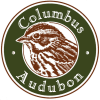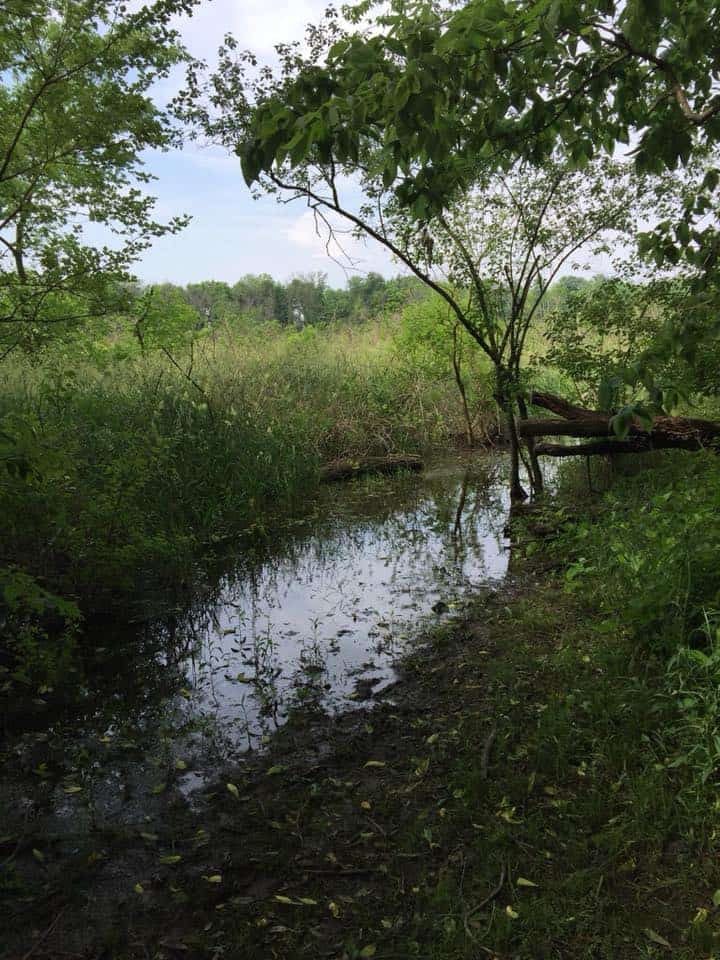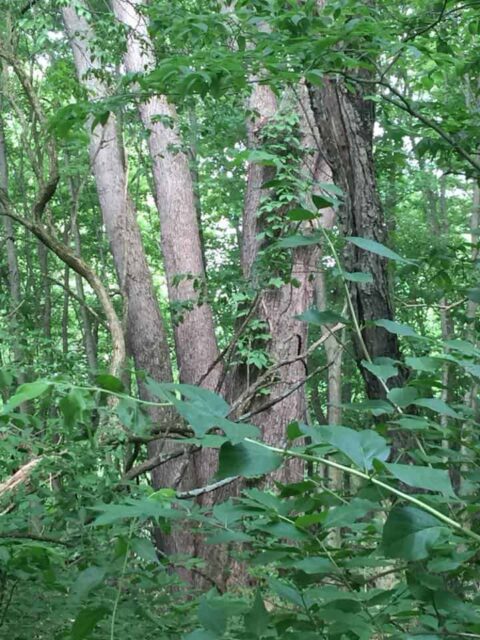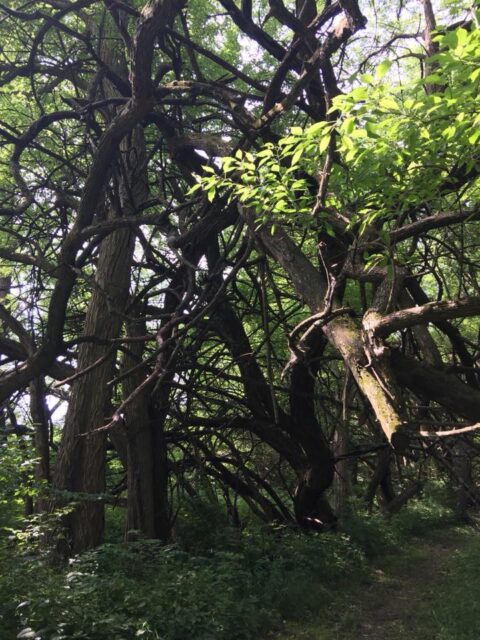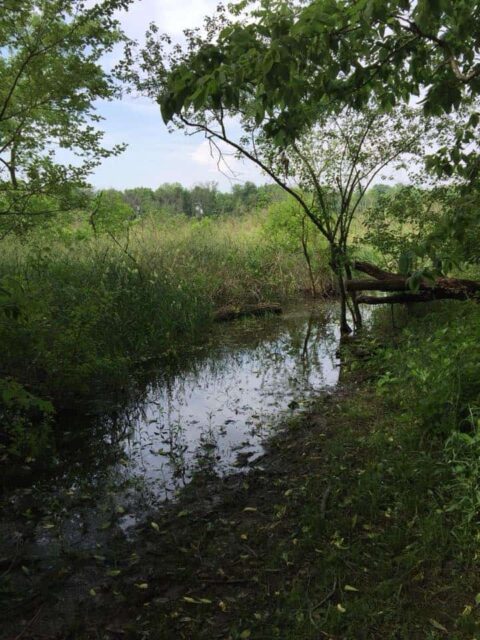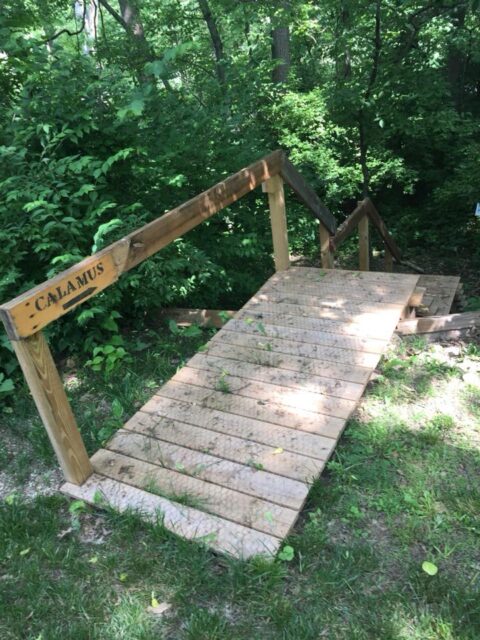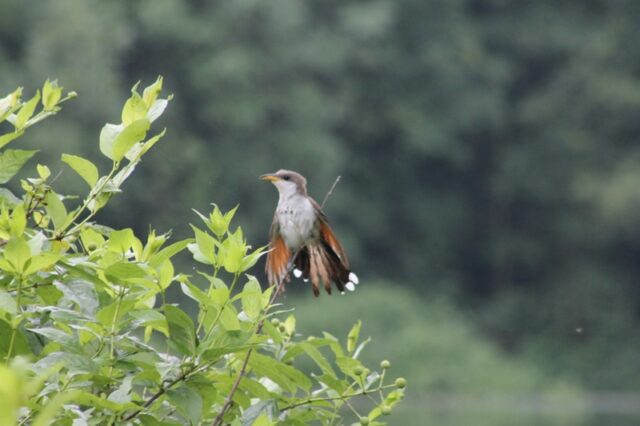I clicked on the May 2018 Song Sparrow newsletter email and scrolled through the events. Interesting. A BioBlitz at Calamus Swamp Preserve, 6:00 am to midnight, May 26. The purpose was to collect data for the preserve and I get jazzed being a citizen scientist. I opened my calendar and jotted down the event before I emailed to express my interest and ask for more details. The next morning, I received a hearty welcome reply (sent at midnight) from Tom Sheley. My excitement spiked.

For years, I’d driven past the gravel lot near the Ohio intersection of Rt. 104 and 22. In the winters, I caught glimpses of a boardwalk. Other seasons, I noticed mowed trails. My husband told me it was Calamus Swamp, a public preserve. I’d always wanted to stop, but never had the time.
The next morning, I pulled into the parking lot where a large white sign stood: Calamus Swamp Preserve, Pickaway Trail Parking. A Pickaway County Park District logo appeared in the left bottom corner and a Columbus Audubon logo appeared at the bottom right corner. How had I missed this big white sign?
A House Wren chortled its familiar loud song (for such a small bird) as if greeting me while I changed into my hiking boots, hung binoculars around my neck, and slipped my Peterson Field Guide into my fanny pack, along with a small notebook and pencil. Cardinals sang and a Turkey Vulture circled overhead.

I said hello to several others standing in the parking lot before I followed a mowed path to the registration table. I received warm greetings and instructions for the data collection from Allison Boehler with the Midwest Biodiversity Institute. She informed me that the insects clinging to a cooler were fishflies. Wow! Sitting next to her was Tom Sheley of the Audubon Society and the gentleman who answered my email. Tom’s name sounded familiar to me. Someone later told me he’d owned Wild Birds Unlimited. I’d likely met him there. Before I started bird watching, my husband and I drove to the store to report a “diving bird” we’d seen while biking around Antrim Lake. We were told it was an Osprey. I was amazed! I think seeing that Osprey and being in Wild Birds Unlimited brimming with birding items launched me into bird watching. Thank you, Tom!
While registering, I asked about a bird I was hearing. Allison immediately introduced me to expert birders Matt Shumar and Angelika Nelson, the editor of the Columbus Audubon Song Sparrow newsletter. Not only did they inform me it was a Catbird and not a Northern Mockingbird, Matt gave me a tip to help me differentiate the two. I was getting more excited by the second. I was in the midst of rock stars!
I was told to hike on the perimeter path because the boardwalk was under water and the swamp water would be over my mud boots due to the spring rains. Blaine Keckley, who manages the daily upkeep of Calamus, was kind enough to accompany me along the north side of the swamp as we slogged through mud and water over our ankles. I was glad I followed the suggestions in Tom’s email and wore my rubber knee-high boots. As we inched along the slippery path, Blaine explained that the swamp hadn’t been this high in nearly a decade. Before we parted ways, he showed me the short cut along the edge of the woods to the perimeter trail. When I walked through the opening, I was enveloped in a world of green and the sounds of nature. I breathed deeply as I entered this new natural kingdom.
Bees buzzed, birds sang, and frogs croaked. To my right, the swamp waters reflected the small amount of sunlight that slanted through the woods. I stopped to watch a bee buzzing in a flower. I stood, absorbing all the life that surrounded me. Everywhere I looked were living things I could and could not see.

As I continued to make my way along the east side of the swamp, a man approached me loaded down with small wire cages, nets, and a bag of white scientific-looking bottles. His backpack was so stuffed, it looked like it could easily topple him backward. He excitedly told me he’d seen the longest leech he’d ever seen. “Is that good?” I asked. He looked at me with shock. “Absolutely. It’s more than what you think.” I later learned this was Martin Knapp, the lead macroinvertebrate taxonomist, also from the Midwest Biodiversity Institute. He handed me a can of bug spray. He slung his backpack over an arm and asked me spray his back. I gladly did as he requested before he thanked me and went on his way.
Marty’s excitement was contagious. I couldn’t wait to see what was around the next bend of this green heaven.
A huge tree grew in the middle of the trail and I climbed over a large gnarly tree branch and ducked under another one of its branches to continue on my journey. The tree looked like a giant octopus reaching outward and upward. I spotted another tree that had grown from a stump and named it “the three sisters.” I watched bugs flit about on leaves and heard frogs or turtles plop into the water. Several bullfrogs greeted me. A Mallard couple flew from the water.

I climbed the small set of stairs that led to the old railroad bed. A few minutes later, I climbed down another set of stairs that led me down into the swamp again. But this time, I couldn’t continue. As I stepped into the water, about four feet between me and the boardwalk, the water went over the top of my boot. And I didn’t know what was ahead. I decided not to chance it and followed the path back to the steps and returned by walking on the berm of 104. If you ever have to do this, walk on the south side of the road and be aware of oncoming traffic; it’s a busy highway. (And please, don’t litter. There’s enough trash in the ditches along this road to start a landfill. Sad but true.)
When I returned, I was happy to report that I saw a life bird—a Yellow-billed Cuckoo. I also shared that I’d never heard so many Gray Catbirds in one place. I referred to Calamus as “Catbird Swamp.”
On my way to my car, a gentleman had a large camera lens, pointed toward the ground. I waited until he was finished and asked what he was shooting. “Small butterflies,” he replied. “Like this one?” I asked. “Oh, no! This is a different kind,” he said, excitedly, thanking me for bringing it to his attention.
As I drove home toward Columbus, I smiled. Calamus Swamp is wonderful place and I will certainly stop there again.
And I hadn’t missed the large white sign. It was installed the day before the BioBlitz.
Trudy Brandenburg is the author of “The Emma Haines Kayak Mystery Series”
